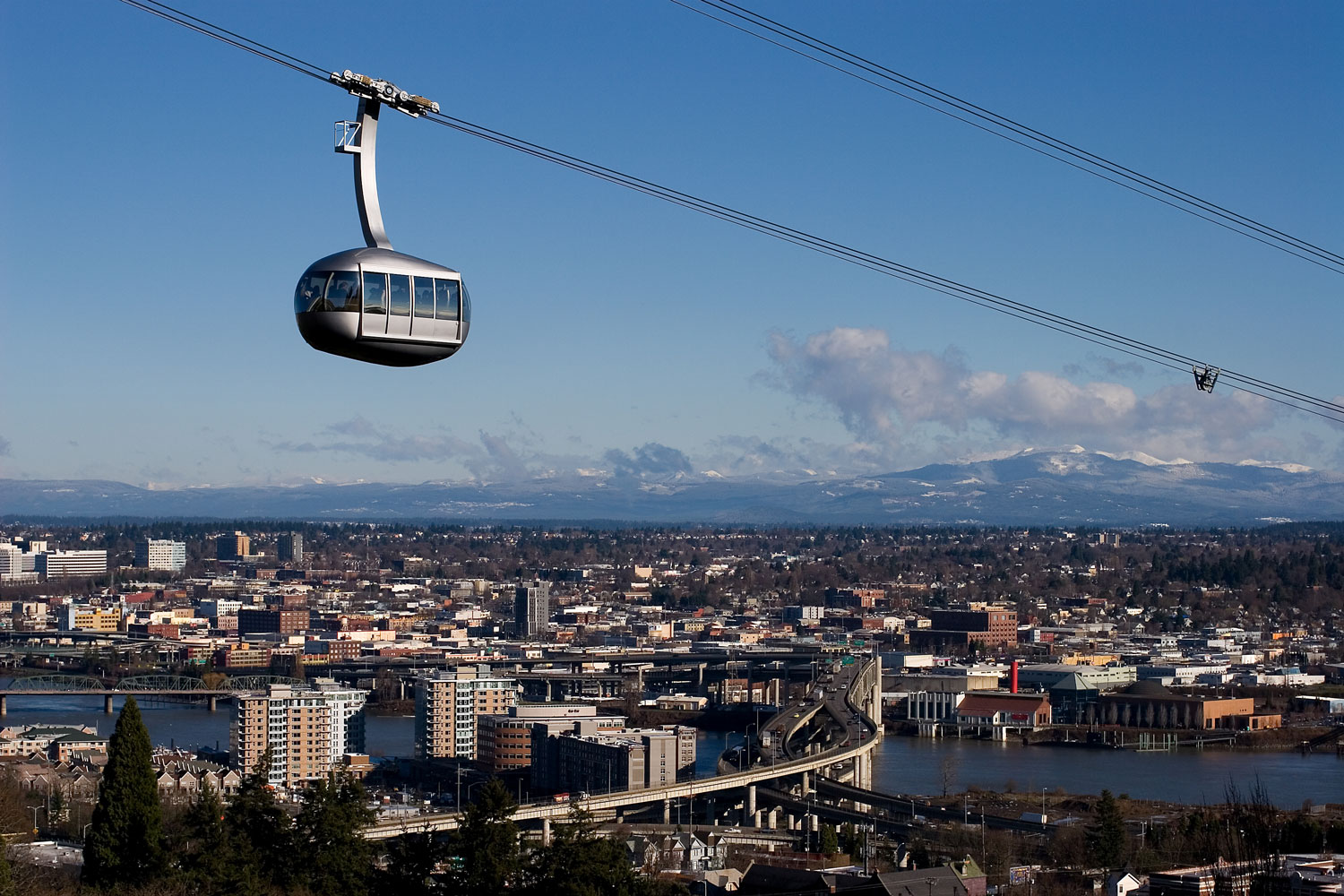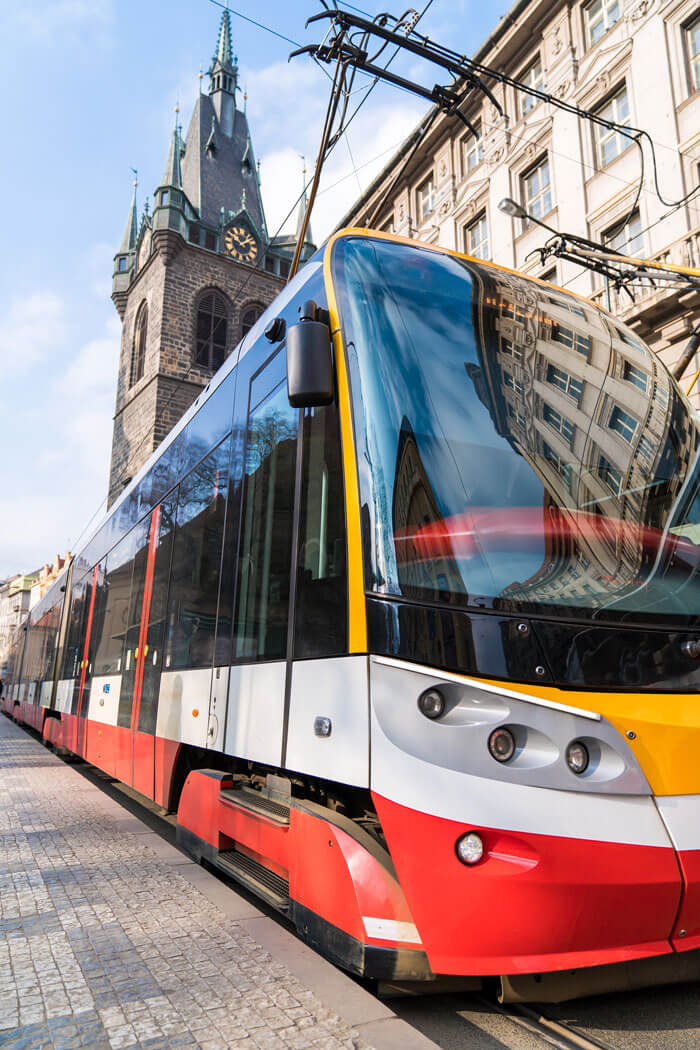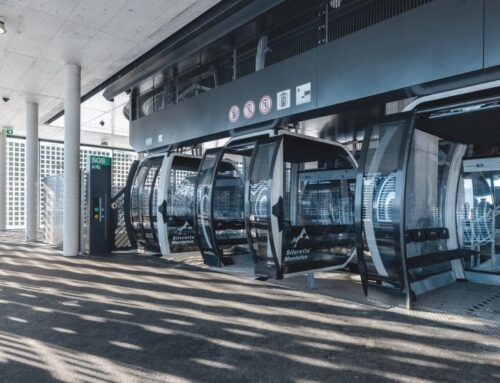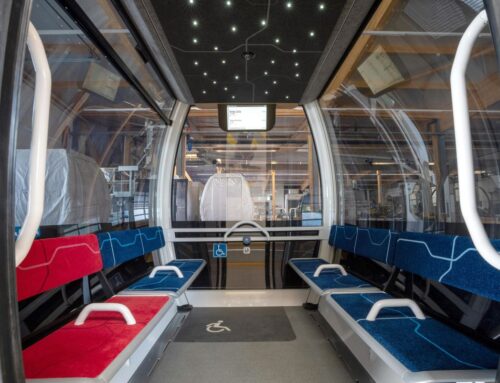
Cities, SI Urban 1/2020
THE COMPLETE VIEW
Urban cable car projects often fail on the grounds of social acceptance. Lack of knowledge and the absence of a requirement profile are reasons for this. SALZMANN, the established Austrian planning office for cable cars, therefore had some basic research undertaken – with exciting results and a holistic view of urban cable cars as a part of mobility landscapes.
To be specific, former SALZMANN working student Loris Rau devised a template on the basis of real cable car projects, which the mayor and city planners can use even before a feasibility study, to investigate whether their cable car idea makes sense.
Essentially, the type of use (urban, urban-tourist, tourist) and the purpose (connection, extension, relief etc.) must be clarified. The core of the requirement profile is then a holistic view of seven major areas with which the transport, social and financial benefit of mobility solutions can be compared and established.

Loris Rau, author of the requirement profile for urban cable cars
“Stakeholder and publicity management in urban cable car projects is highly sensitive, unsophisticated and can impede cable car projects even in the initial stages. Initially, a requirement profile with a study of alternatives should be commissioned from a cable car planner such as SALZMANN.
Residents who are affected should then be involved at the earliest possible stage and public interest should be stimulated by means of public involvement. Only then should a feasibility study be conducted.“
Statutory framework conditions
The first area – statutory framework conditions – differs from one location to the next. Whereas cable cars are not represented at all in some countries, there are others where they are included in or excluded from local public transport laws, or neither.
Depending on the legal situation, approval and funding for urban cable carscanlookverydifferent.Inaddition, there are different regulations for fire prevention, safety distances, recovery.
Geography and ecology (implemantation)
Both in Alpine areas and in the urban environment, ecology plays an important role, although with a different focus here: people. From a topographical perspective, an urban area is generally less challenging. By contrast, in the city, there are urban development obstacles, powerlines or bodies of water to take into account.
Urban development
Which level and which areas are suitable for the urban cable car? These are not easy questions to answer, as space in the city is often very limited. Here, the cable car must be integrated into the existing mobility landscape (cycle, pedestrian, road and other transport routes).
The inclusion of infrastructure (such as shopping facilities) and well-designed architecture for cable car stanchions and stations also fall under this area. “Cable car stations can contribute to urban development, by being designed as new hubs,” Rau says.
The urban development should therefore also include the residents affected, with whom the mayor, city planners and transport experts need to discuss issues such as noise, emissions and privacy.
Performance
Among other elements, this “classical discipline” of cable car planning includes calculation of transport capacity, scalability (parking during peak and off-peak times), cycle time and energy supply. “A cable car idea is often investigated only in respect of these technical areas, which is definitively too short-sighted,” Rau says.
Nonetheless, the performance of an urban cable car remains an important point, especially where extendibility and independence of the transport system are concerned.
“It is demonstrated here that the requirement profile can also be applied to other modes of transport and must be assessed in the overall context of the mobility concept. We do not fixate on cable cars from the outset, as that would limit the identification of requirements,” Rau states.

Profitability
What should the planned mode of transport cost? The framework for investment and operating costs is established in the requirement profile. The costs serve as a guide and must not be regarded as a mandatory requirement, otherwise they would affect the purpose of the social and benefit-oriented planning.
Integration into local public transport
The integration of fares and the physical integration of the cable car into the local public transport are essential requirements. “These concern not just intermodularity and technical interfaces, such as joint railway and bus stations, but also interconnected fares and timetables as well as a shared digital infrastructure,” Rau emphasises.
One example would be an app (such as Moovel), which could be used to book all services and would thus facilitate intermodular passenger management.
Mobility needs
Fans of urban cable cars must ultimately not forget that the passenger wants not only to get from A to B but also to have an optimal transport experience. The accessibility, safety, comfort, smart functionality and design of the cable car play a major role in this. Overall, there are 60 mobility demands that have been established on the basis of Maslow’s hierarchy of needs.
Summary
The new requirement profile from SALZMANN is a comprehensive template for meaningful and exhaustive investigation of cable car ideas even before a feasibility study. The Austrian planners and engineers are happy to help here. ts Contact details and information at www.salzmann-ing.at







